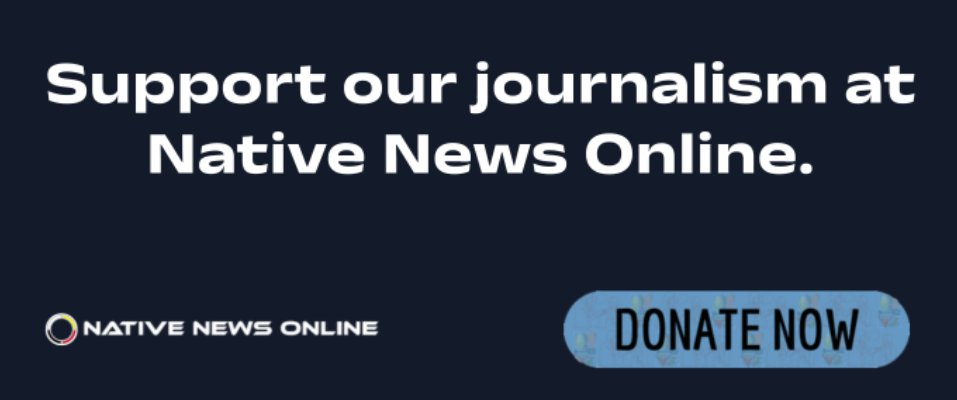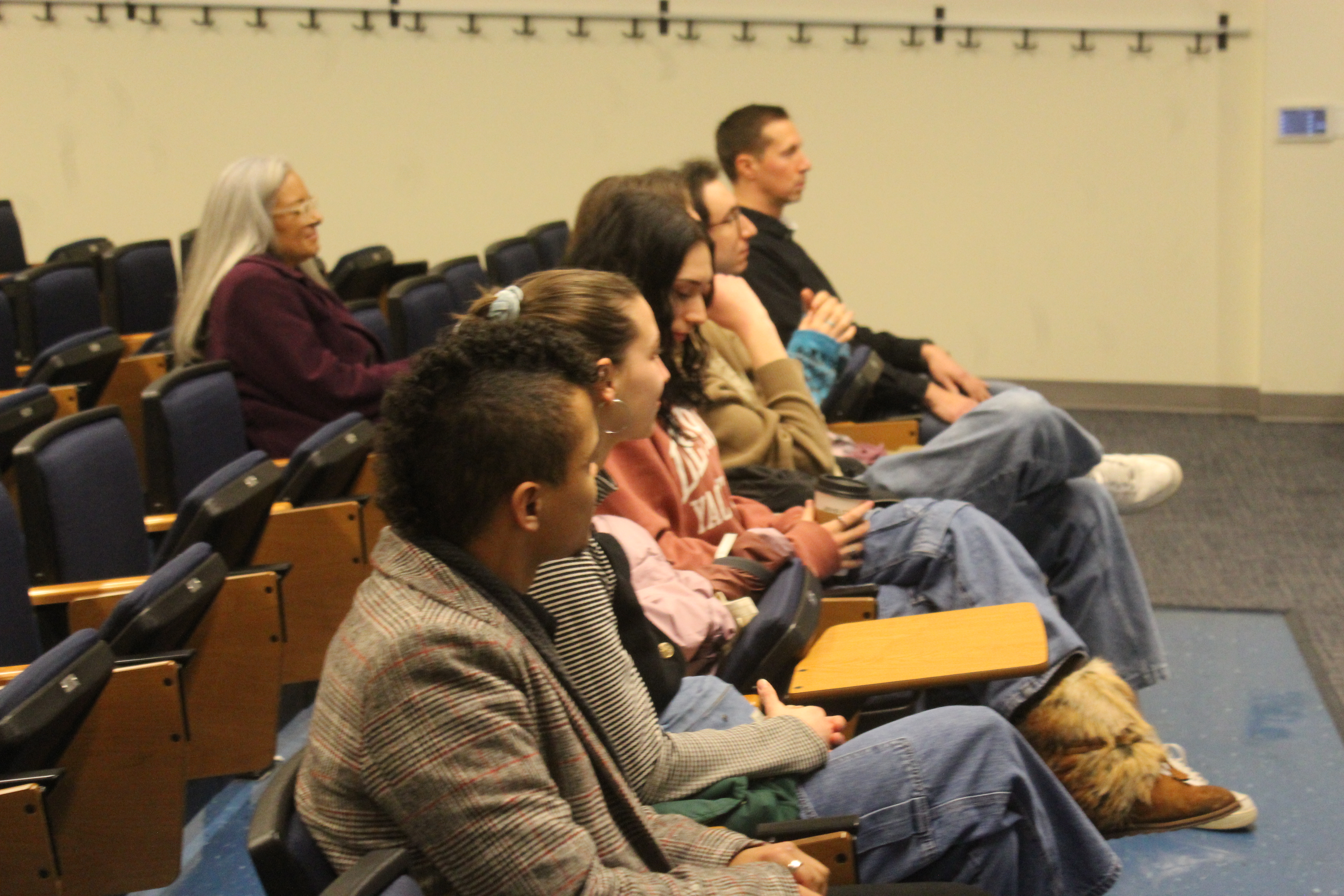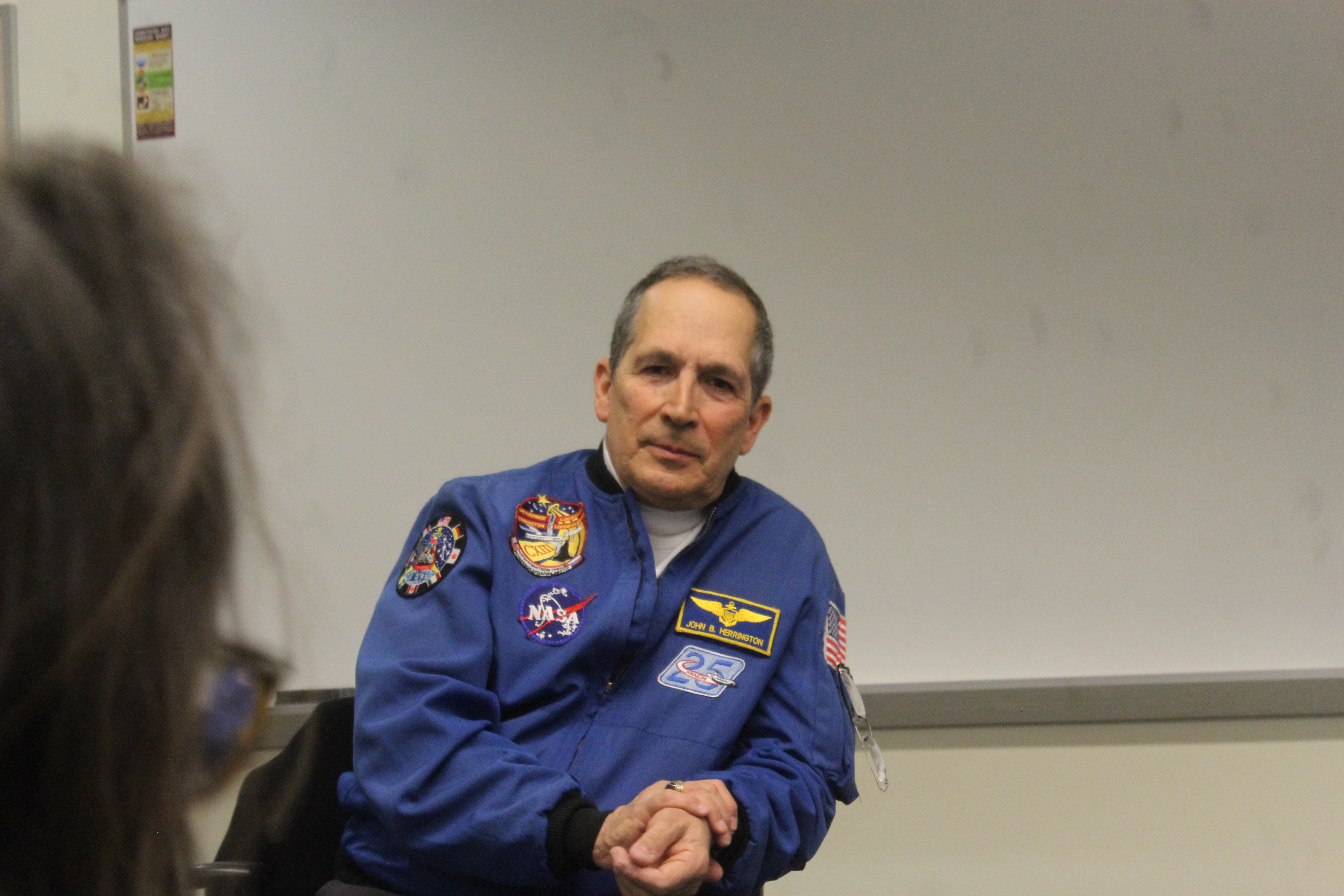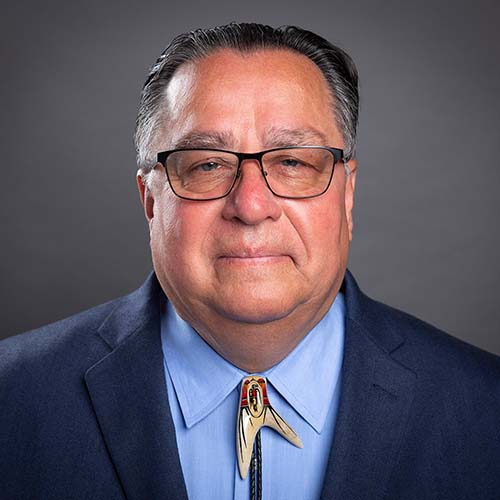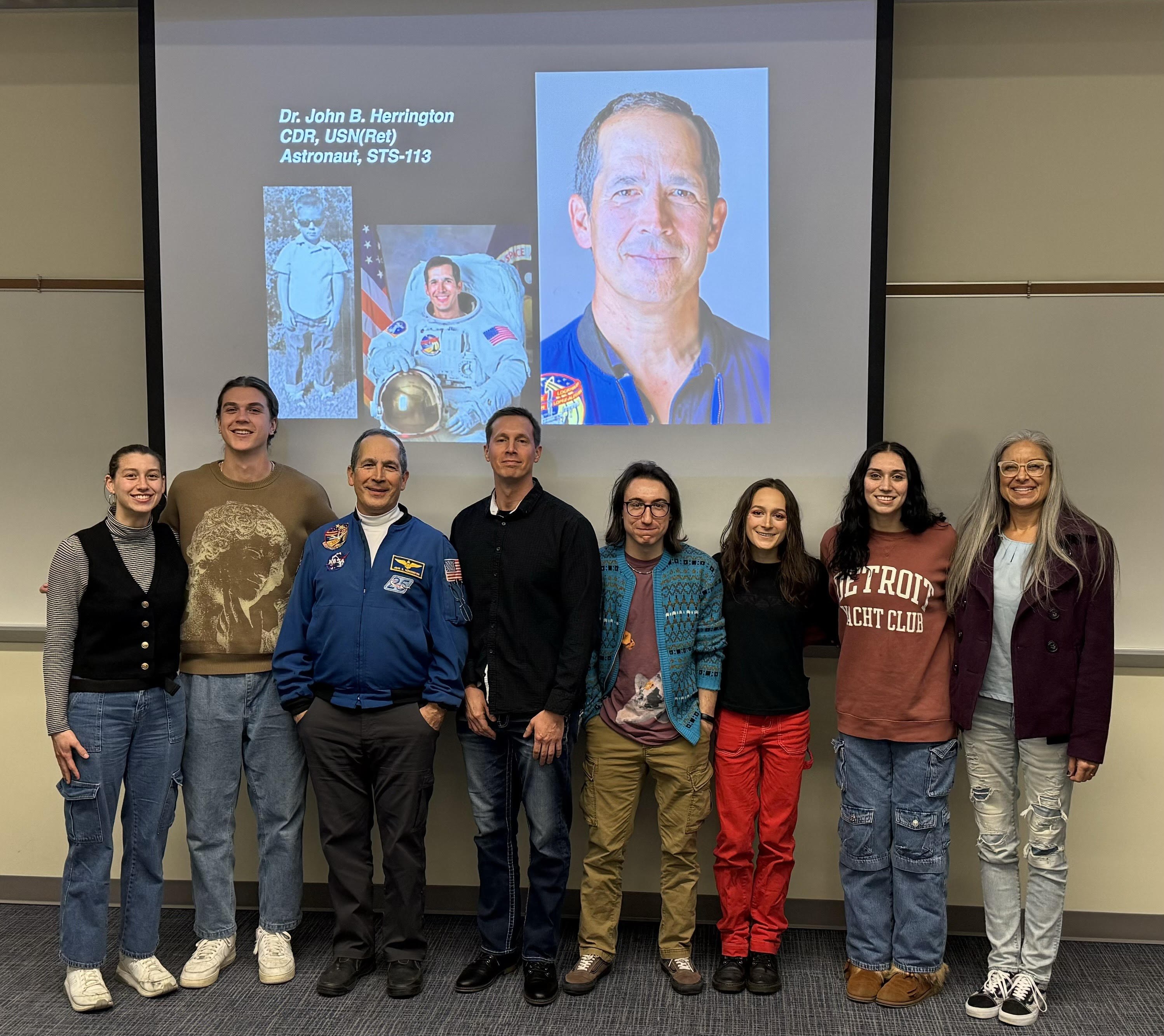
- Details
- By Levi Rickert
GRAND RAPIDS, Mich. — Retired NASA Astronaut John Herrington (Chickasaw) who made history as the first Native American to fly in space, spent over an hour with Native American students at Grand Valley State University (GVSU) last Friday.
Herrington was in Grand Rapids on Friday as the keynote speaker for the Roger That! Symposium at Grand Valley State University in a presentation entitled Living Your Dreams. On Saturday morning, he presented at the Grand Rapids Public Museum.
Herrington was selected by NASA in April 1996 to be an astronaut. He flew on STS-113 aboard the Space Shuttle Endeavour, which was launched on November 23, 2002 and landed back on Earth on December 7, 2002. During the 13 days, 18 hours, and 47 minutes he was in space, Herrington conducted three spacewalks totaling 19 hours and 55 minutes.
Herrington described to the students his journey from working in a restaurant, dropping out of college, and becoming a rock climber. He joined the U.S. Navy and became a pilot, went back to college and eventually obtained a Ph.D.
He described to the Native American student the overall mission of STS-113, which was to deliver a truss segment that provides structural support for the Space Station radiators. Endeavour also delivered a new Expedition 6 crew to the Station.
Native students listen to Herrrington. (Photo/Levi Rickert)
Asked about whether he used Indigenous knowledge as an astronaut, Herrington replied back then it wasn’t even called Indigenous knowledge but said he always recognized the contributions Native Americans made in fields such as engineering and science.
“I just like to think that our ancestors did what they did. They had challenging times, but learned how to survive. They always came up with ways to survive,” Herrington said.
He said there is a lack of representation of Native Americans in textbooks.
Herrington speaks to students about his adventures in space. (Photo/Levi Rickert)
Herrington said he disagreed with how NASA was told to wipe all mentions of Indigenous and women from their website after President Trump’s DEI executive order. He further said NASA has had to cut back its efforts to recruit Indigenous students to enter into the space program.
“I think it is important for Native students to see the possibility of becoming astronauts. It’s not giving them an unfair advantage to see the possibilities they may have,” Herrington said. “You are taking away huge opportunities for kids to have. This push back on DEI is an absolute terrible thing. They are taking away opportunities.”
Belinda “Lin” Bardwell (Odawa), senior advisor on Native American Affairs and assistant director of Office of Multicultural Affairs, said she loved the interaction Herrington had with the Native students.
“Giving students the opportunity to see themselves as professionals and contributers to the great thinkers of our time is the most rewarding part of this job. No matter the profession, my Native/Indigenous community is contributing, but we don’t always get to see them. This was just another great opportunity GVSU was able to give our Indigenous students,” Bardwell said. “He gave our students inspiration to overcome and become.”
Throughout his conversation with the Native students he gave them a lot of anecdotal information he experienced while in space. He mentioned that his space suit smelled like burnt metal after his space walks.
Asked whether or not he was afraid while in space, he said he was too busy to be scared. However, there was a moment when he thought he had become untethered when he really was.
More Stories Like This
Hanging a Red Dress for Christmas: MMIP, Native Higher Education, and Hope for a Better New YearNative Students Can Win $5,000 Scholarship, International Distribution in Pendleton Design Contest
American Indian College Fund Raises Alarm Over Plan to Shift Native Programs Away From the Dept. of Education
MacKenzie Scott Foundation Gives $5 Million Contribution to Little Priest Tribal College
Tribal Leaders Push Back on Dismantling of U.S. Department of Education
Help us defend tribal sovereignty.
At Native News Online, our mission is rooted in telling the stories that strengthen sovereignty and uplift Indigenous voices — not just at year’s end, but every single day.
Because of your generosity last year, we were able to keep our reporters on the ground in tribal communities, at national gatherings and in the halls of Congress — covering the issues that matter most to Indian Country: sovereignty, culture, education, health and economic opportunity.
That support sustained us through a tough year in 2025. Now, as we look to the year ahead, we need your help right now to ensure warrior journalism remains strong — reporting that defends tribal sovereignty, amplifies Native truth, and holds power accountable.
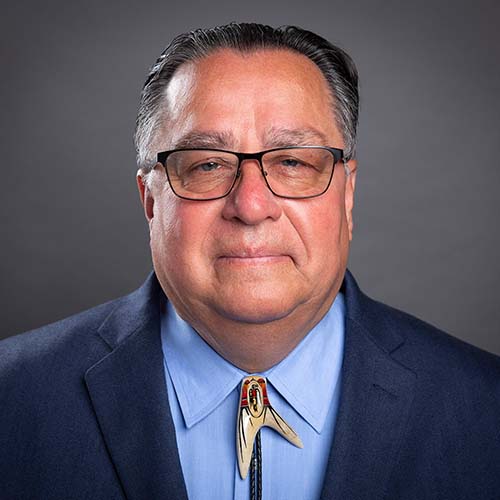 The stakes couldn't be higher. Your support keeps Native voices heard, Native stories told and Native sovereignty defended.
The stakes couldn't be higher. Your support keeps Native voices heard, Native stories told and Native sovereignty defended.
Stand with Warrior Journalism today.
Levi Rickert (Potawatomi), Editor & Publisher

